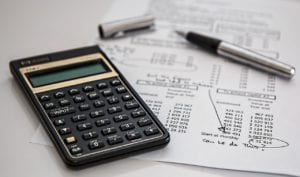Top 4 Tax Deductions Claimed by Property Investors
It is significant to ensure that you maximize your tax deductions for your investment property every year in Australia. The higher the tax deductions will imply less tax payment to the Australian Tax Office (ATO). When you buy an investment property, you must consider a few vital questions. But, a large number of investors often take into consideration the tenanting capacity, location, and purchase price of the property. They end up overlooking depreciation for residential rental property in many cases. Depreciation has the capacity of unlocking significant cash flow potential within an investment property. It will leave you with thousands of additional Dollars every financial year.
Here are some important tax deductions that you must not ignore:
1. Capital allowance and depreciation:
These tax deductions are meant for the overall wear & tear of your property over a period of time. These tax deductions have emerged to be the biggest deductions being claimed by property investors. However, these deductions often tend to be the most missed ones. You must get in touch with a renowned quantity surveyor to discover what deductions you may claim on your property. It is because results tend to vary. You need to assess factors when you bought it, how old it is, how long you have owned it, and renovations. An expert QS will assess all this data and prepare your investment property depreciation schedule ATO.
2. Interest and fees:
If you took a bank loan for buying a rental property, you can claim deductions for interest levied on that loan amount. In case you paid $15000 interest for the financial period including $150 bank fees, you can claim the entire $15,150 as a tax deduction. If property remained tenanted briefly, your accountant can prepare a pro-rata claim for the period during which it was leased.
3. Property advertising and management fees:
It will include the fees that you paid while trying to find a tenant for your property. It may include expenses like online, print, or signage and you will be eligible to claim them against income produced by that property. Similarly, you may also claim fees, commissions, or payments that you paid to an agent for managing your property. There are several reliable property depreciation consultants available and you may seek their assistance while preparing your depreciation report.
4. Insurance:
It has emerged as one of the most significant expenditures. It is worth noting that you can claim the cost of your insurance premiums against your rental property. And, if you need to claim a part of this expenditure as a result of a partial rental year or several properties insured together. In such a scenario, the insurance provider will offer you help with a breakdown.
Conclusion:
You may seek your accountant’s assistance to ensure you claim your tax deductions properly. He will assess whether all the expenses have been included or not and make effective use of the investment property calculator. An expert will take into consideration the repairs and maintenance work as well. You need to undertake these works to repair a defect or to fix deterioration to the property. These tax deductions are claimed by landlords every year in Australia.





